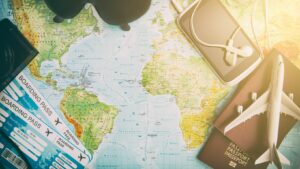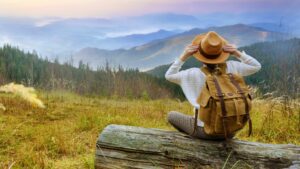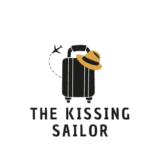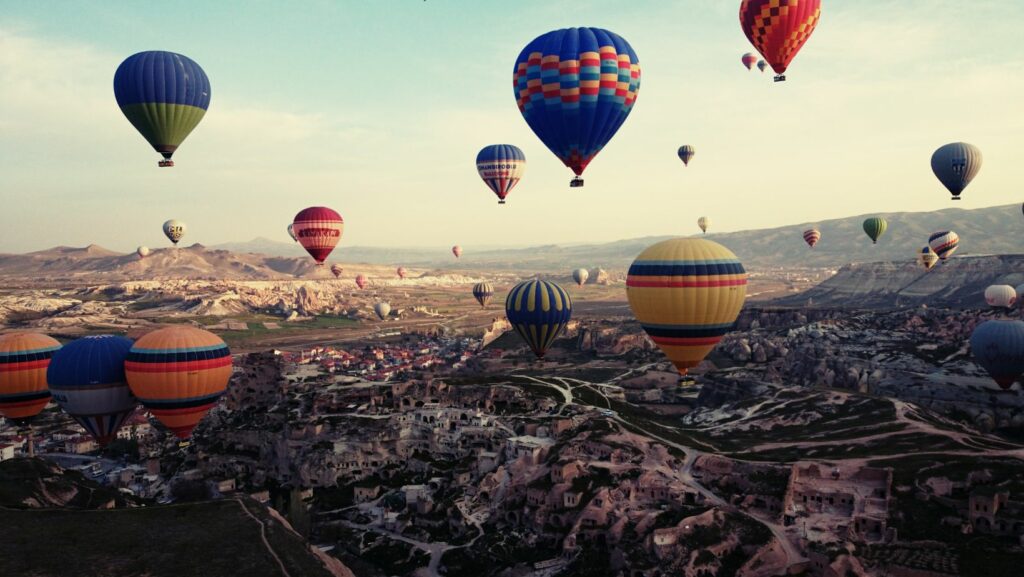Ever felt an unquenchable thirst to explore the world? That’s wanderlust calling. It’s a powerful force, driving people to pack their bags and venture into the unknown. This feeling, this urge to travel, is more than just a simple desire—it’s wanderlust.
Wanderlust is a term that’s been romanticized by travelers, poets, and artists alike. But what really is it? Is it simply a love for travel, or is there more to it? This article will delve into the true meaning of wanderlust, its origins, and how it influences our lives. So, fasten your seatbelts and prepare for an exciting journey into the heart of wanderlust.
Define Wanderlust
In the quest to quench curiosities about wanderlust, deep diving into its definition and etymology provides extensive understanding. It’s essential to explore the multifaceted aspects of this desire to see the world.
The Definition of Wanderlust

Wanderlust holds an extensive definition beyond a mere desire for travel. It is, at its core, a deep longing to engage with the world in an intimate, immersive manner. It is the internal push to step out of comfort zones and journey into the unknown. The American Psychological Association defines wanderlust as “a strong psychological urge or desire to travel and explore the world”.Peeling back the layers, wanderlust is a compound word, a blend of two words with German origin. It combines ‘wandern’, a verb meaning ‘to hike’ or ‘to roam’, and ‘lust’, a noun implying ‘desire’, ‘pleasure’ or ‘inclination.’ Thus, in essence, wanderlust literally means an eager inclination or a passionate desire to travel, hike, or roam, reinforcing the reverence for exploration and discovery inherent in the term. The term was absorbed into English from German around the early 20th century, indicating a long-standing fascination with the concept.
The Psychology of Wanderlust
Delving deeper into the psyche of wanderlust reveals an intricate blend of innate curiosity and yearning for novelty. This section explores the underlying facets of this phenomenon, from the inherent desire for adventure to the neurological factors stimulating wanderlust.
The Desire for Adventure and Exploration

Fueled by an inherent appetite for novelty, wanderlust strikes deep in the heart of many. It evokes a compelling need to engage intimately with one’s surroundings, carving paths through uncharted territories, mountains, and seas. For instance, celebrated explorers like Christopher Columbus and Ferdinand Magellan exemplify this profound desire, their journeys shaping the course of history.Contrary to popular perception, wanderlust isn’t merely a fanciful whimsy; it has roots in human neurology. Studies indicate a correlation between the human brain’s reward and pleasure centers and the urge to explore. That is, dopamine, a neurotransmitter linked to reward-based learning, plays a crucial role in stimulating wanderlust. In a study by the Department of Psychology at the University of California, Berkeley, increased levels of dopamine proved instrumental in propelling exploratory behavior. Here then is tangible proof, suggestive of wanderlust’s associations with human neurological functions.
Wanderlust in Culture and Society
Harnessing the spirit of adventure, wanderlust significantly shapes culture and society. This captivating phenomenon spills over into various aspects of community interaction and creative expression, notable examples are its influences in social media, literature, and film.
The Trend of Wanderlust in Social Media

Social media platforms, primarily Instagram and Facebook, have dramatically amplified the prevalence of wanderlust. These platforms serve as a digital gateway for sharing captivating images and stories of destinations, creating a culture of virtual exploration. A quick scan through popular tags like #Wanderlust, #Travel, or #Adventure reveals millions of posts encapsulating the allure of far-off places and fostering the desire for discovery among users. Influencers, touting a nomadic lifestyle, underscore this trend, attracting sturdy followership by immersing their followers in vivid travel experiences, albeit virtually. Social media has, in essence, reinvigorated the age-old spirit of wanderlust and crystallized it into a daily, accessible reality for social media users.
Wanderlust in Literature and Film
Wandering, being an essential part of humans’ existential journey, features prominently in literature and film. Authors like Jack Kerouac in ‘On The road’, Jon Krakauer in ‘Into the Wild’, and Paolo Coelho in ‘The Alchemist’ have tapped into the wanderlust narrative, exploring the transformative power of travel and self-discovery. Such works capture the essence of wanderlust, emphasizing the quest for broader perspectives, personal growth, and consciousness expansion through travel and exploration.

